Why are email attachment size limits imposed?
An email attachment size limit is the maximum size of files you can attach in a single email. The limit varies depending on your email service provider or email client.
Several concerns associated with larger files lead email service providers to impose these limits. Let’s look at a few of them.
1. Limited bandwidth and server capacities
Email servers have limited server capacities as a large number of emails are sent every day. Larger files can overwhelm these servers as bulkier files consume higher bandwidth. It can also be expensive for email service providers to allocate additional resources to maintain the efficiency and speed of the email delivery system.
2. Compatibility issues
Various email clients do not support large files. As a result, recipients may be unable to view the attached files if they’re too large. Email attachment size limits ensure compatibility across various email clients.
3. Security risks
Large attachments can pose potential security risks, as they may contain malware, viruses, or codes that can corrupt the recipients' computers. Also, scanning these larger files for potential risks can be a time-consuming and resource-intensive process. If file size limits are not imposed, these risks cannot be sustainably monitored.
Size limits in popular email services
The size limits for attachments are usually between 20 to 30 megabytes of data. Depending on your email service, the email attachment size limit may vary. The following table will give you the size limits of some of the most popular email service providers.
| Email service provider |
Email attachment size limit |
| Gmail |
25 MB |
| Outlook |
20 MB |
| Yahoo! |
25MB |
| AOL |
25 MB |
| iCloud Mail |
20MB |
| Neo |
30 MB |
| Thunderbird |
20 MB |
How to send large files via email
There are two main ways that you can use to send large files via email. Let’s go through each of them in detail.
1. Use a cloud storage service
The easiest way to bypass the size limit is to attach a link to the file uploaded to a cloud storage. Cloud storage allows you to store your files on remote servers that you can access through the internet. You may use cloud services such as Google Drive, iCloud, Dropbox, OneDrive, etc, to store and share your files.
You can see how you can send files on Gmail and Microsoft Outlook using their respective cloud storage services, i.e., Google Drive and OneDrive.
How to send large files on Gmail
Scenario 1: Your file is already uploaded on Google Drive
Step 1: Click on the Google Drive icon at the bottom of your Compose window.
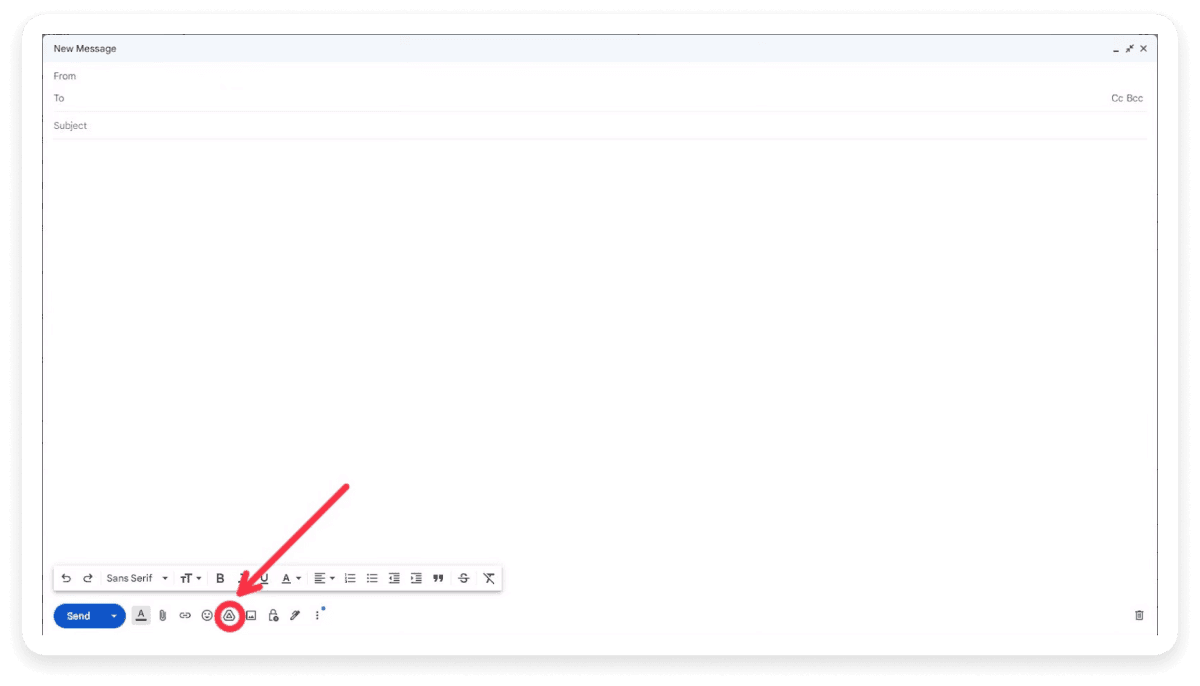
Step 2: Select your file from the popup window. You will see the options to insert your file as an attachment or as a Google Drive Link. If the file size exceeds the attachment limit, you will see a message informing you that your file will be sent as a Drive link.
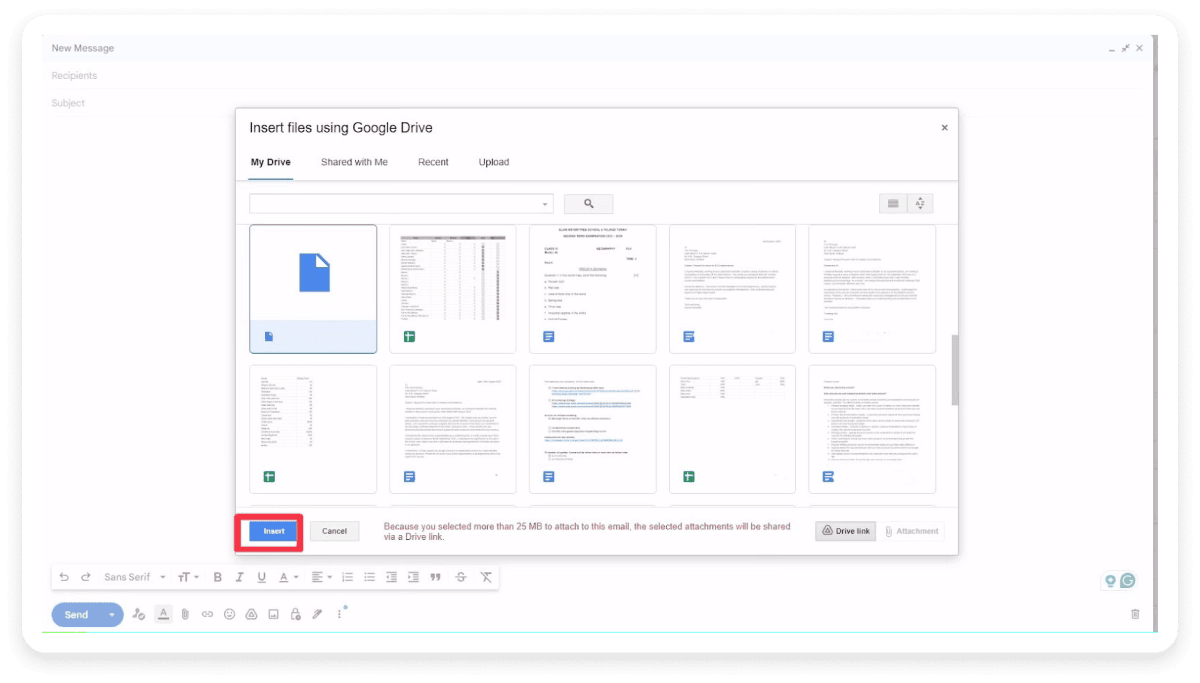
Step 3: Click on Insert, and your file will be attached to the body of your email, as you can see in the image below.
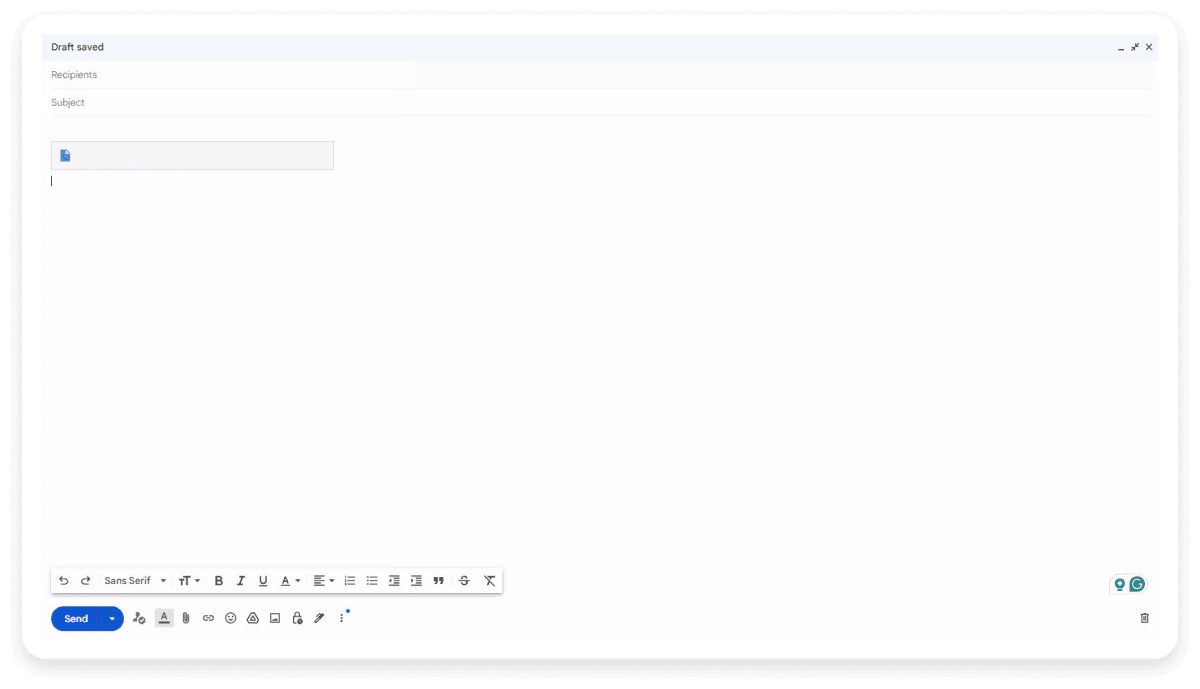
Scenario 2: Your file is on your computer and not uploaded on the Drive
Step 1: Click on the attach button and choose the file you want to send as you did in the previous method. You can also drag and drop the file into your Compose window.
Step 2: If the file is within the size limit, it well get attached to the email directly. However, if the file size exceeds the limit, a popup window will appear and inform you that large files must be shared using Google Drive. Once you click the OK, got it button, your file will be uploaded to the Drive, and the link will automatically be attached to the email.
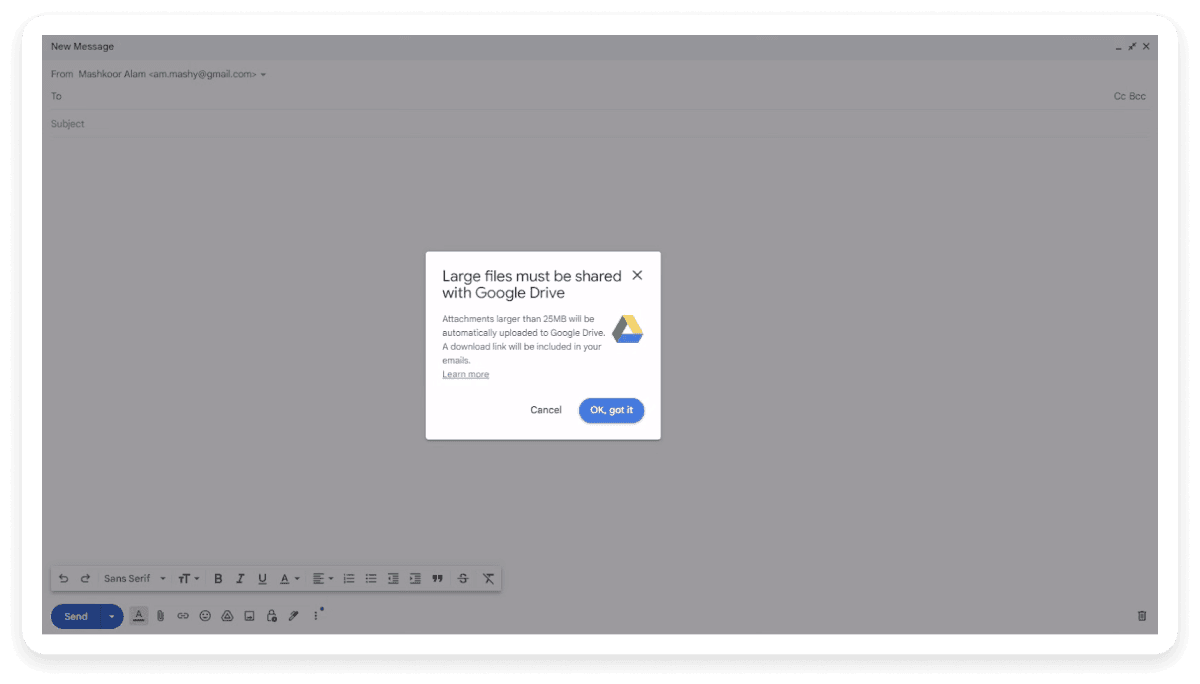
How to send large files on Outlook
If you are using Outlook, here’s what you can do:
Scenario 1: Your file is already uploaded on OneDrive
Step 1: Click on the attach button on the toolbar of your compose window and click on OneDrive.
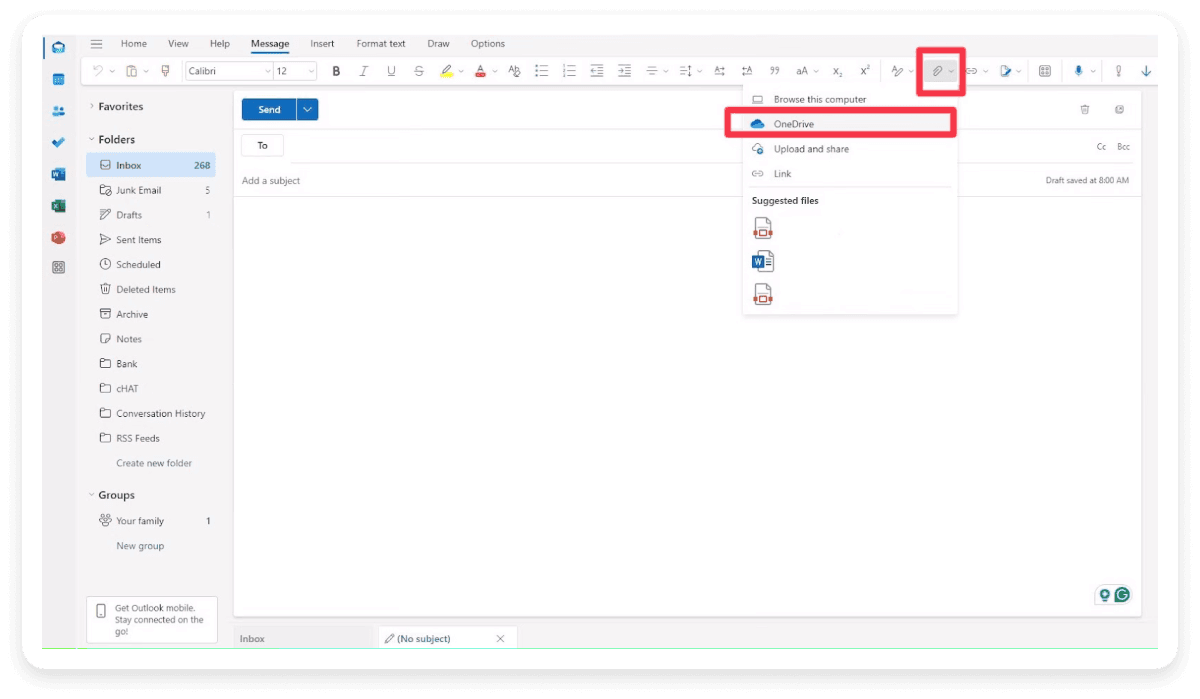
Step 2: A window will now appear. You can double-click your file or select your file and click on Share Link to attach your file.
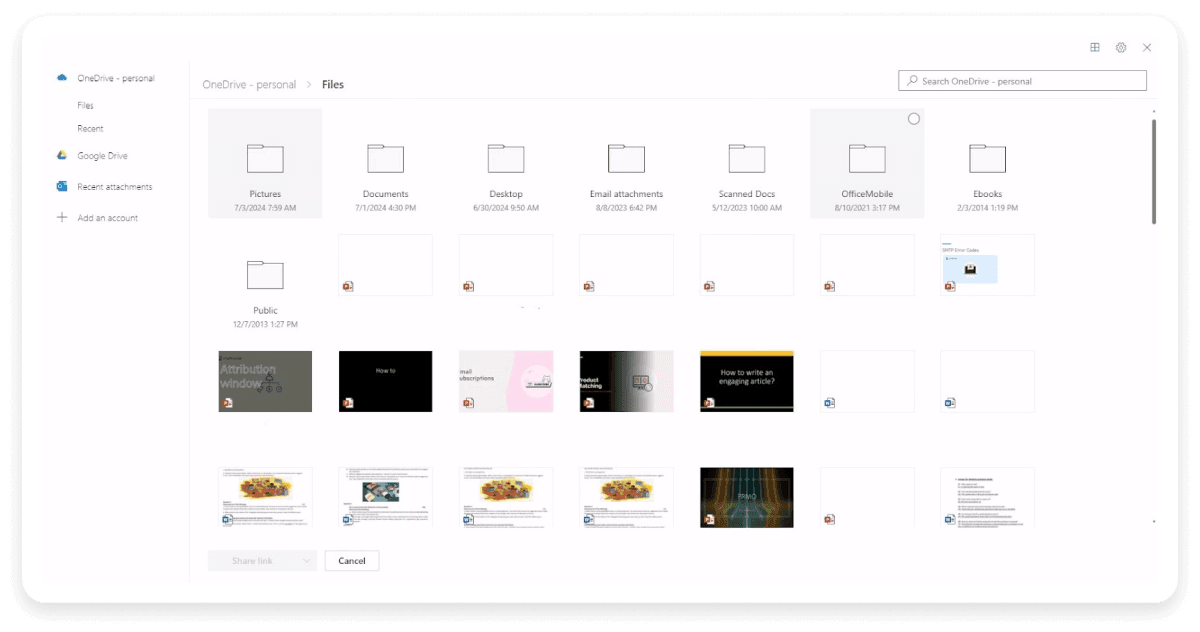
Once done, you will be able to see the file link in the email's body.
Scenario 2: Your file is on your computer and not uploaded on OneDrive
Step 1: Click on the attach button on the toolbar and choose the ‘Upload and share’ option.
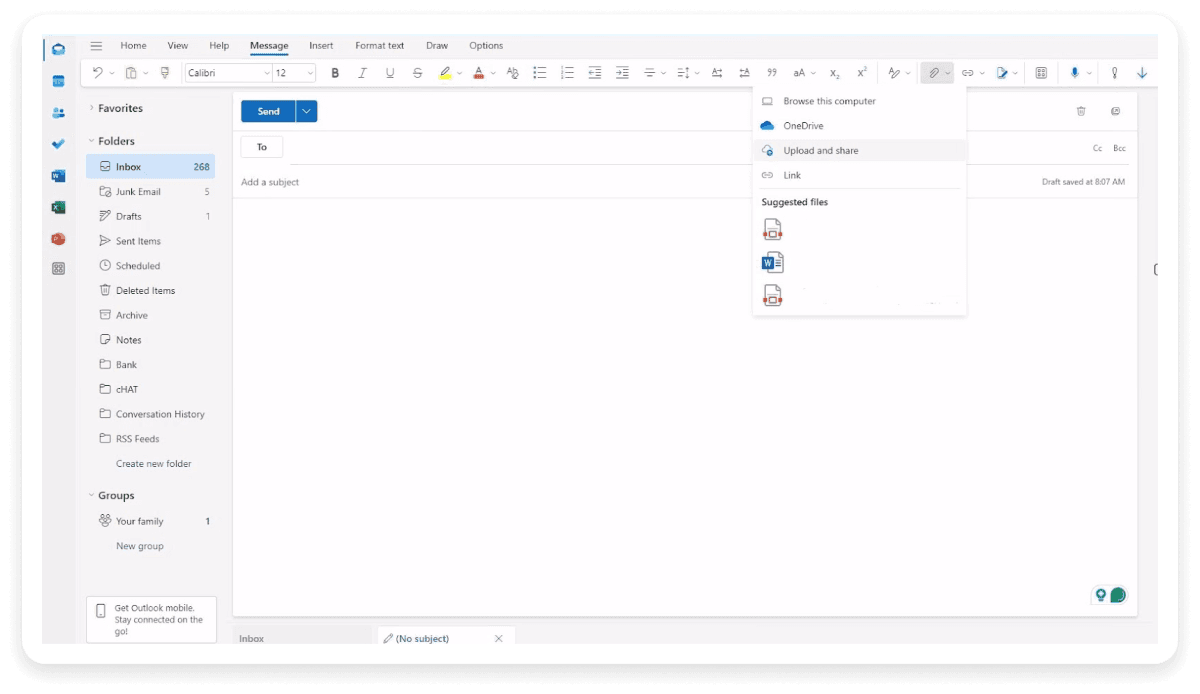
Step 2: From the popup that opens, choose the file you want to send and click on Open.
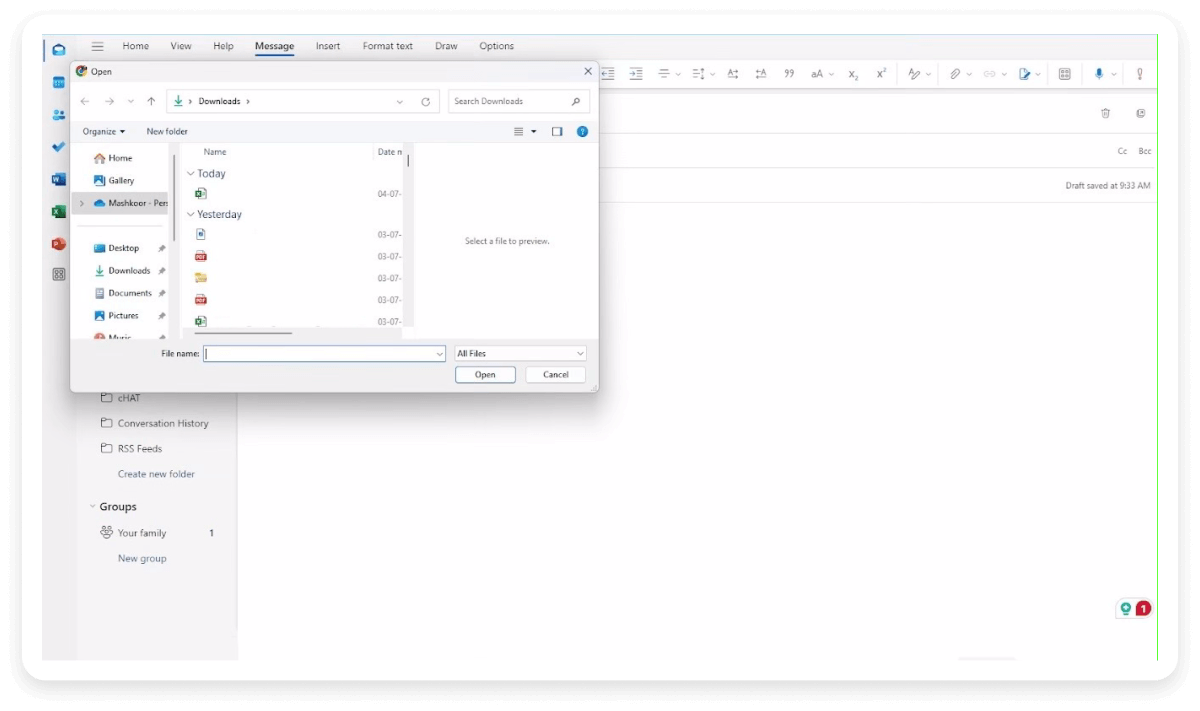
Step 3: If your file exceeds the email attachment size limit, a dialog box will pop up with the option to attach the file as a OneDrive personal link. Select the option and click on Upload.
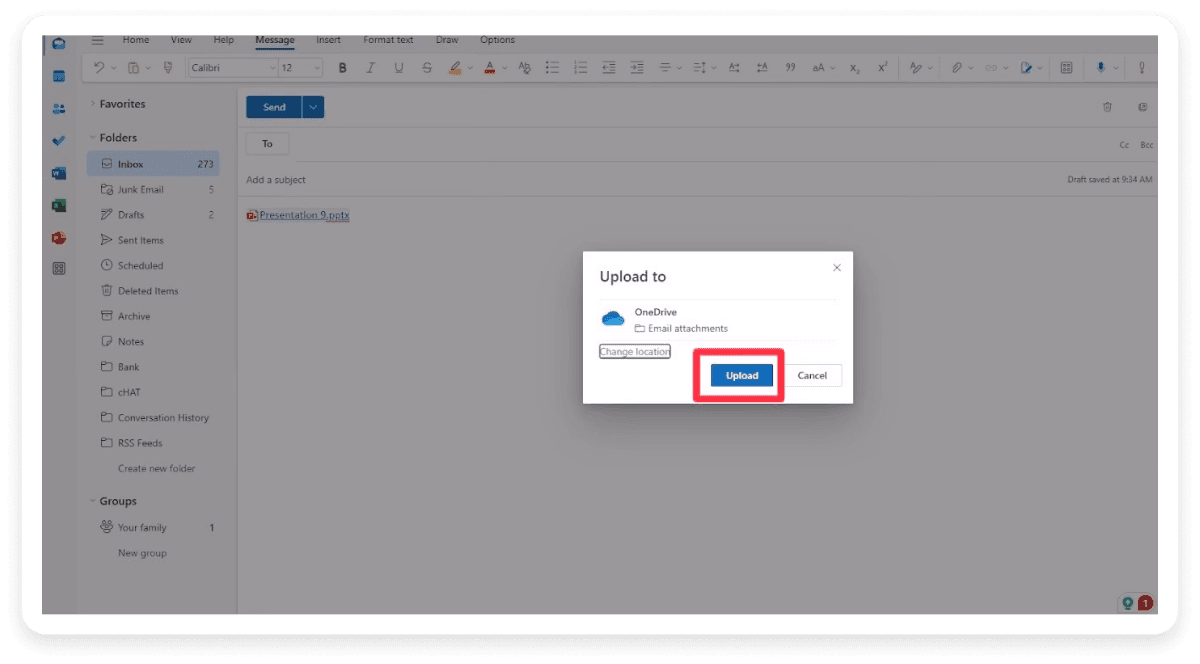
Alternatively, you can also use other file transfer services that upload your file temporarily to their own cloud storage and provide you with a link to share with the recipient. You can copy and paste this link into the body of your email. Here are the steps you can follow on the file transfer service, Transfernow.
Step 1: Click on Upload and choose the file you want to share.
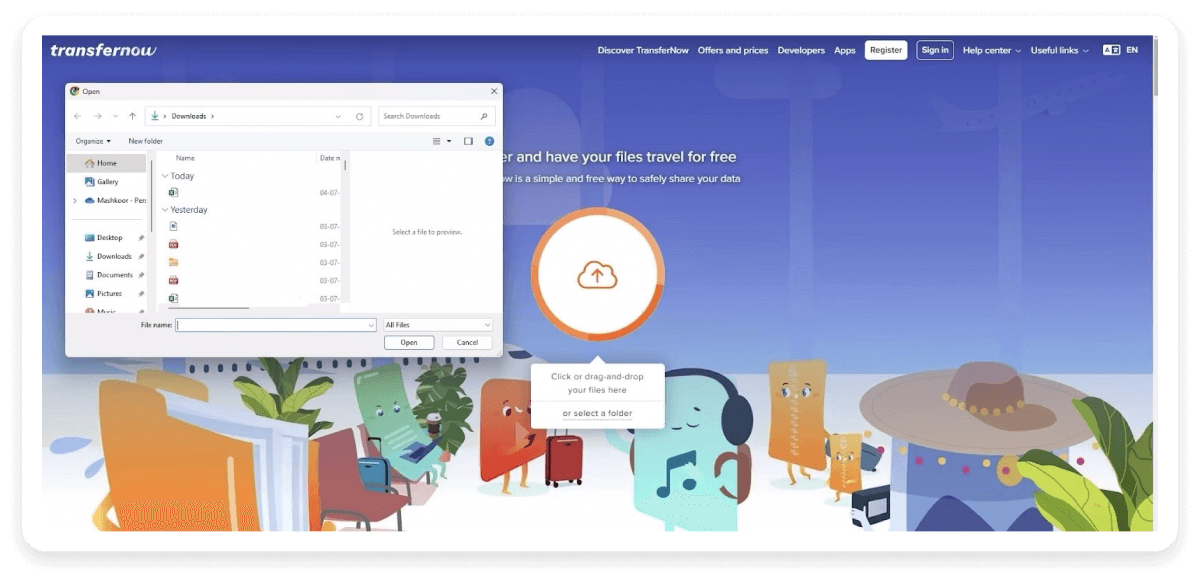
Step 2: Go to the Create a link tab, enter your email address, and click Transfer.
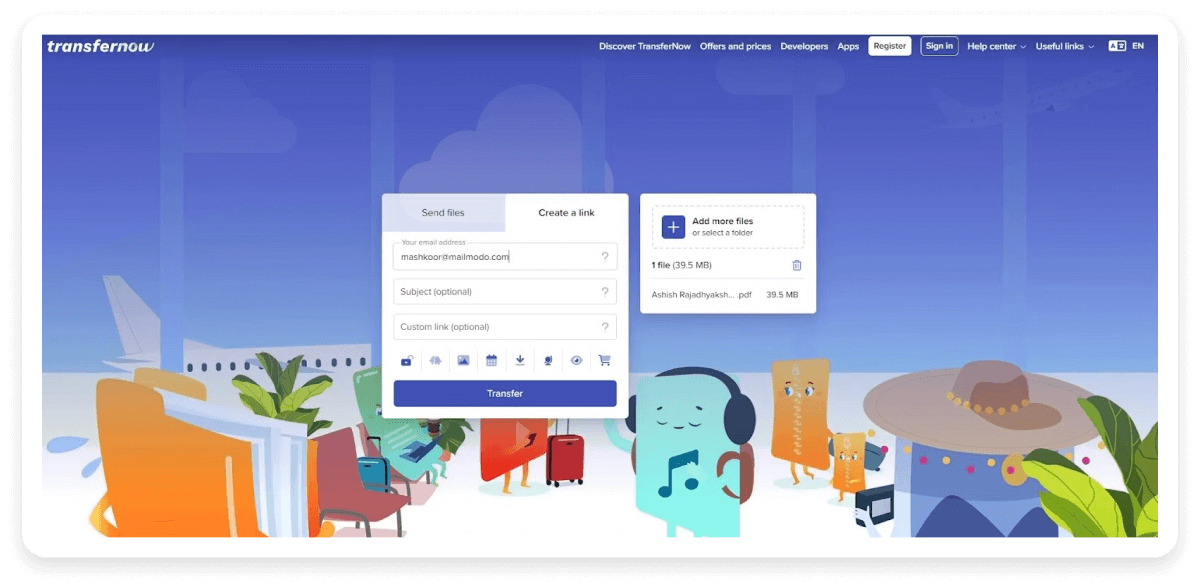
Step 3: Copy the link and paste it into the body of your email so the recipient can view and download the file from there.
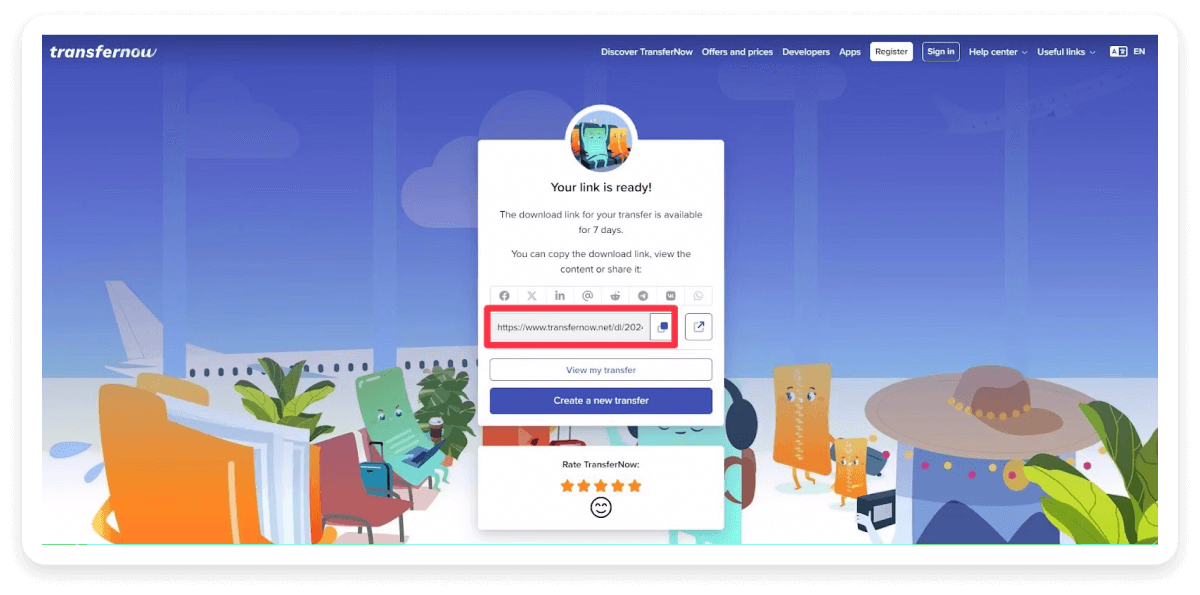
2. Compress your file
Another simple solution for sending large files by email is to compress the file. Compressing a file makes sending and receiving it easier because of its smaller size, as it can be uploaded and downloaded faster.
If you are a Windows user, you can use WinZip, 7-zip, or WinRAR to compress your files. You can do this by right-clicking on the file you want to send and then on the “Compress to ZIP file” option. As a result, you will get a new ZIP file containing the file you want to send, and it will have a smaller size than the original file.
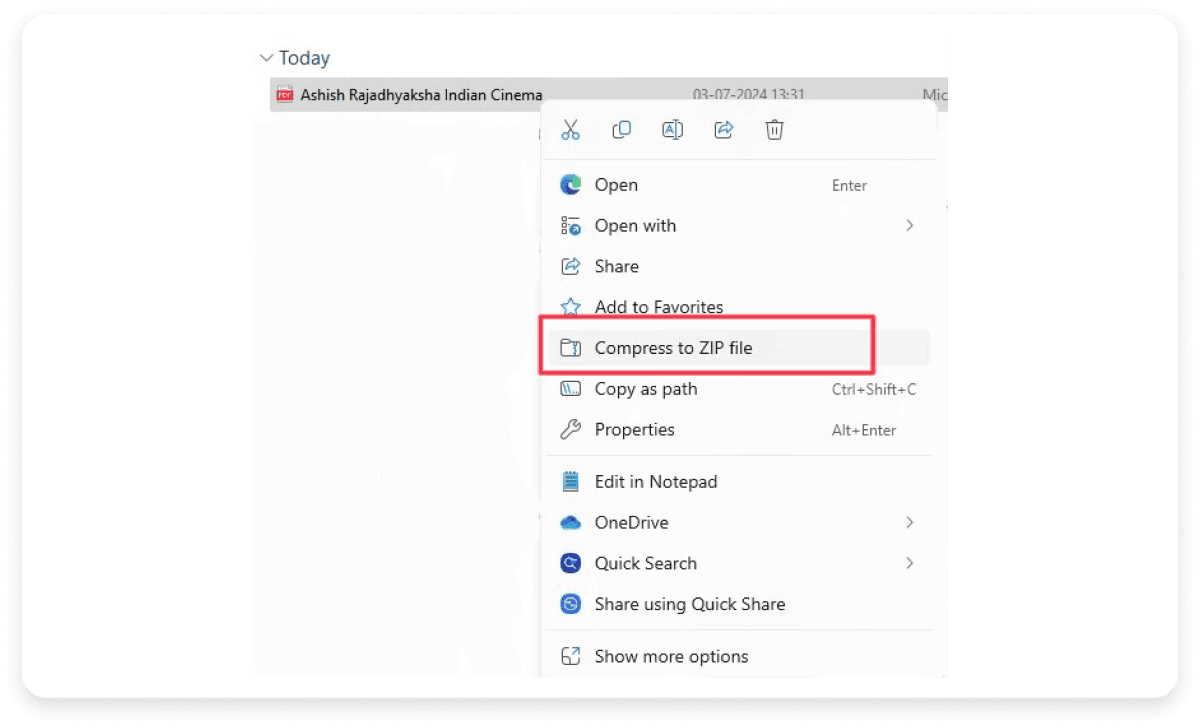
Mac users can easily create a ZIP file by right-clicking on the file you want to send and selecting the “Compress” option.
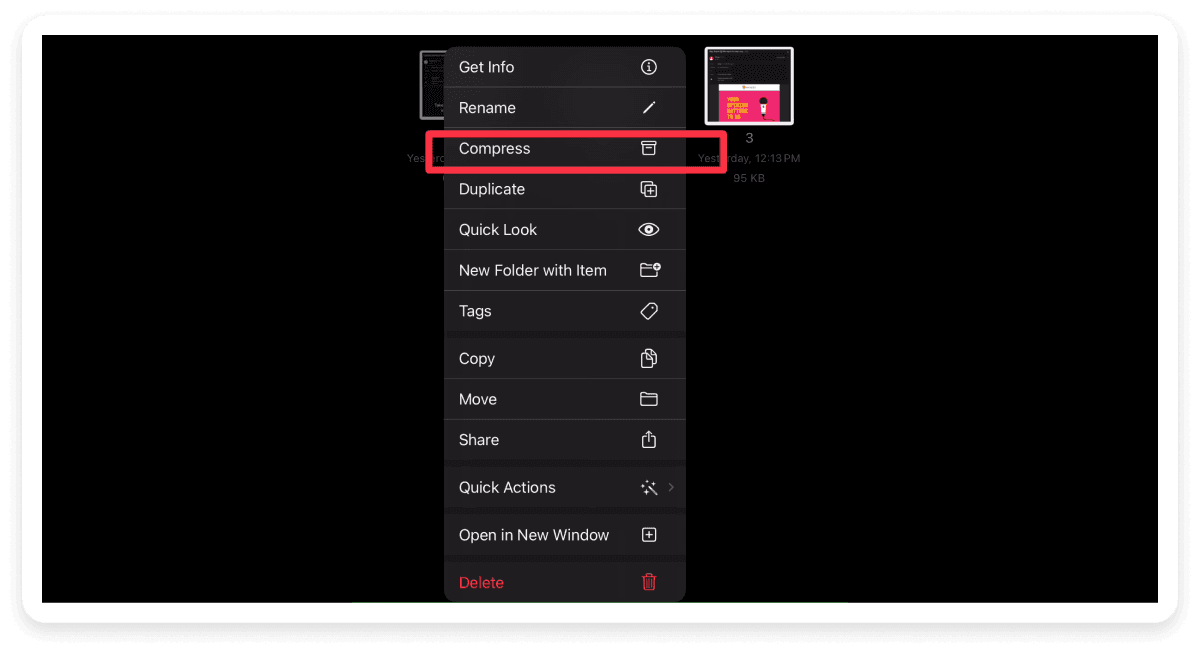
Once you have compressed your file, you can attach it to your email and send it.
However, if your file exceeds the file limit by a lot, the above method might not reduce your file size to bring the size within the limit. In such cases, you may want to use an online compression service for your specific file.
Below is an example of an online PDF compressor called Smallpdf that allows you to upload your file and compress it significantly. Here’s how you can do it.
Step 1: Visit the website, click Choose Files, and select the file you want to compress.

Step 2: Choose the compression type and click on compress.
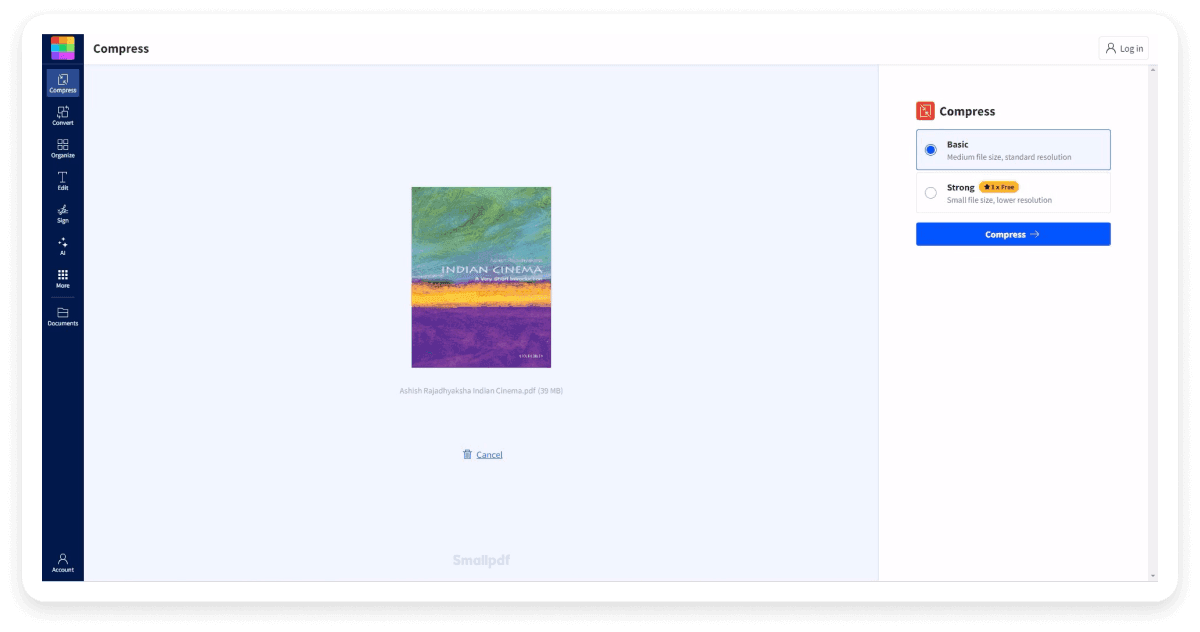
Step 3: Once compressed to a file size within the email attachment limit, you can download the file and attach it to your email like a normal attachment.
As you can see, the final file has a significantly smaller size. The original file was 39MB. The compressed file is 77% smaller or 9 MB.
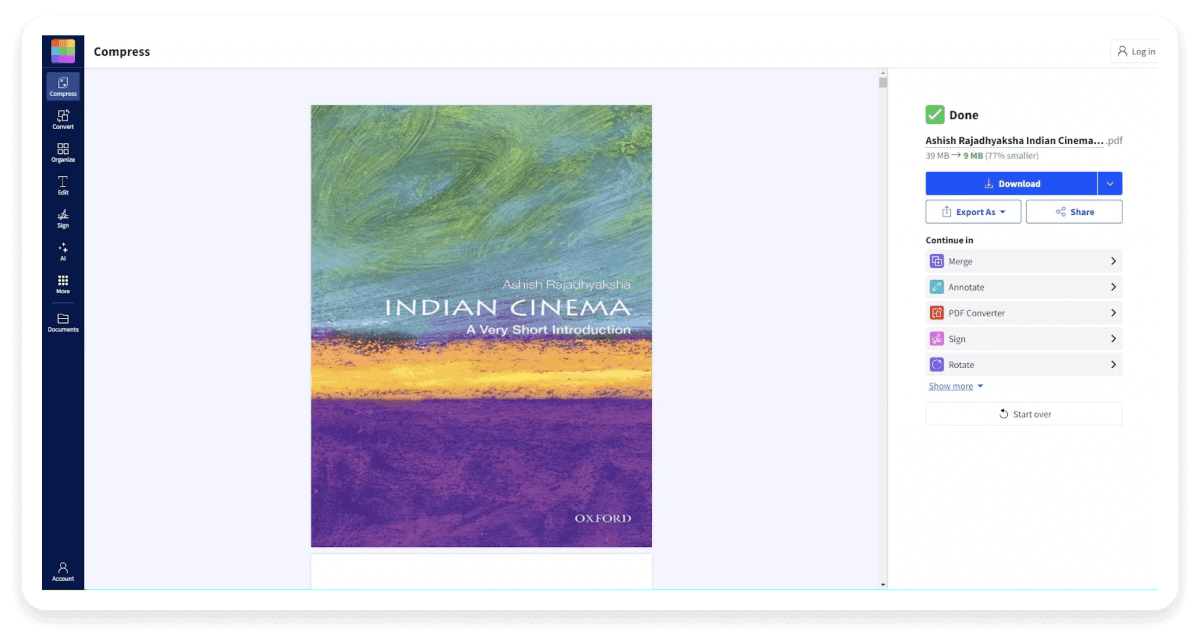
Depending on the file type you need to send, you may use other free online compressors to compress your file. If the file you wish to send is a video file, refer to our guide on how to send a large video through email.
Conclusion
Email attachments are useful and very commonly used. While email attachment file limits can be a hassle, there are multiple ways in which you can overcome them following the steps discussed in this guide. Make sure that you choose a method that is appropriate for the size, type of the file, and the email client you’re using. So, the next time you want to send a bulky file via email, you can do so effortlessly.
















































